 Harris’ paranormal mysteries offer an irresistible blend of humor, romance, fantasy, and Southern charm.
Harris’ paranormal mysteries offer an irresistible blend of humor, romance, fantasy, and Southern charm.
Charlaine Harris had a revolutionary idea a few years ago about how to break out of the midlist where she was holding a respectable position: She would write the kind of novel that she had always wanted to write.
It didn’t matter that the kind of novel she set her sights on hadn’t really been done before—a humorous vampire story set in the South. It also didn’t matter that her agent wasn’t enthused about the idea or that it would take two years to sell to a publisher.
What mattered was this was the novel Harris, who had a lifelong interest in the paranormal, believed in.
Thus was born Sookie Stackhouse, the telepathic Louisiana barmaid who runs with vampires, werewolves, and assorted creatures. She made her debut in 2001’s Dead Until Dark, which won the Anthony Award for best paperback. Sookie was an almost immediate hit with readers, because amid the fangs and sly humor Harris also tapped into an appealing character who was, above all, a survivor.
More importantly, with Sookie, Harris reinvented herself after more than 25 years as a published writer. The payoff for Harris’ risk-taking has culminated in a wildly successful year.
Just in 2007, Harris published two novels, All Together Dead and An Ice Cold Grave, both of which made the New York Times Best Seller List. There’s also Many Bloody Returns, a collection of short stories co-edited with her friend Toni L.P. Kelner, and the return to print of her entire backlist of novels.
{youtube width="500"}7OaJT9sZuR8{/youtube}
True Blood, a series based on her Southern Vampire novels, was picked up by HBO. The series features Oscar winner Anna Paquin in the role of Sookie Stackhouse. The executive producer is Alan Ball, an Emmy winner for his HBO series Six Feet Under and an Oscar winner for the screenplay of the 1999 film American Beauty.
Not bad for what began as a tough re-examination of her career.
“I was looking at 50 and my career was stuck on the midlist in a good year,” said Harris, now 56. “I couldn’t seem to get the toehold I wanted. I could have chugged along that way and been reasonably happy. But it struck me that if I were to do anything different and break out of that midlist, the time was now. I wanted to write something that would appeal to a wider audience and something that would play to more my strengths than writing conventional mysteries had.”
And Harris knew exactly what strengths she wanted to shine in her novel.
“I’ve always been a humorous person and I thought it would be fun to write something that contained more humor than I had tried to write. I also wanted to try writing a sex scene before I grew so old that it would be silly. And I just wanted to try to write something about the supernatural because I have been fascinated by the supernatural and the macabre for my entire lifetime.
“So I just thought I would write a book and throw everything in together.”
 In creating her series, Harris used the basics of the vampire legend and then created her own mythology and lore. Harris’ vampires are not Bram Stoker or Anne Rice types, nor do they bear a strong resemblance to the ones that plagued Buffy the Vampire Slayer. In Sookie’s world, vampires co-exist with humans after being “outed” years before with the invention of Japanese-manufactured artificial blood.
In creating her series, Harris used the basics of the vampire legend and then created her own mythology and lore. Harris’ vampires are not Bram Stoker or Anne Rice types, nor do they bear a strong resemblance to the ones that plagued Buffy the Vampire Slayer. In Sookie’s world, vampires co-exist with humans after being “outed” years before with the invention of Japanese-manufactured artificial blood.
Harris has found the appeal of vampires is infinite.
“It’s the whole creature of the night mystique. They’re mysterious, they’re vulnerable during the daytime. They should know how to be very good at sex after all those years of having it. And there is the erotic part of bloodsucking. There’s also fact that they are the repository of living history, which I think is really fascinating.”
Vampires also can be pretty funny.
“I always try to find the humor in every situation. It’s pretty much how I cope. It's part of my character,” said Harris, a gregarious person who in any conversation is quick with a witty phrase and a lilting laugh.
“I would rather see the funny side of things than get bogged down in grief and despair.”
It was this combination of horror, mixed with humor that attracted producer Alan Bell.
“Charlaine has created such a rich environment that’s very funny and at the same time very scary,” Ball was quoted in an article in Daily Variety. “I bought the book on impulse and I just couldn’t put it down.”
Ball is not alone in his admiration of the Sookie novels. The last three Southern Vampire novels have made the New York Times Best Seller List and are published in Japan, the United Kingdom, Greece, Germany, Thailand, Spain, France, Russia, Poland, Korea, the Czech Republic, and Australia.
“She’s become a bit of a brand name, which is what any author wants,” said Richard Goldman, owner of the Mystery Lovers Bookshop in Oakmont, Pennsylvania.
Harris said she does very little research for the Sookie novels, preferring fiction writers’ time-honored prerogative to “make stuff up.” Still, the things she has learned about vampires have surprised her.
 “It was news to me that some people actually thought of themselves as vampires. And it was astonishing to me that there are clubs where people can practice deviant sex. I was surprised to learn that Wicca is a recognized religion in the armed forces and people who practice it can get Wicca holidays off. I must lead a very sheltered life,” she said, with a laugh.
“It was news to me that some people actually thought of themselves as vampires. And it was astonishing to me that there are clubs where people can practice deviant sex. I was surprised to learn that Wicca is a recognized religion in the armed forces and people who practice it can get Wicca holidays off. I must lead a very sheltered life,” she said, with a laugh.
Like any vampire devotee, Harris has her favorites. “Of course, I’m a huge Buffy [the Vampire Slayer] fan. Who isn’t? And I have enjoyed many of the heavy erotic elements of Anne Rice. I have really enjoyed the liveliness and vigor of Laurell K. Hamilton’s writing.”
That Sookie and friends resonate with readers shouldn’t come as a surprise to anyone who has followed Harris’ career. She has keenly explored the vagaries of human nature while specializing in distinctive realistic characters who have a bit of an edge to them.
Her Agatha-nominated Real Murders (1990) introduced Aurora Teagarden, a librarian in a small Georgia town. Although she knew the Dewey Decimal System better than the back of her hand, Harris’ Aurora didn’t succumb to librarian stereotypes. Aurora had a genuine interest in true crime fiction, an active sex life and, during the course of the eight-novel series, went through myriad personal changes and dealt with extreme grief.
Her five Lily Bard novels, beginning with Shakespeare’s Landlord (1996), focused on a character who was the survivor of a horrific crime. As a result, Lily had chosen a solitary life, was confrontational, and obsessed with self defense. And despite a firstrate education, Lily preferred to eke out a living as a cleaning woman.
When the Sookie novels were going strong, Harris introduced a new character in Grave Sight (2005): Harper Connelly, whose psychic abilities allow her to find dead bodies.
“I often need to cleanse my palate between books and the best way to do that is to write something really different,” said Harris. “Harper is very different. She doesn’t have the same sense of humor. She has a different world and with that comes different problems.”
The Harper Connelly novels required a bit more research than Harris usually does. Harper’s clairvoyance is a result of being struck by lightning. Reading about the subject wasn’t enough, so Harris joined a message board of lightning-strike survivors with the administrator’s permission.
“Lightning strikes affect people the rest of their lives and it can do all sorts of things to your body.”
Although Harris’ novels generally are classified as cozies and are liberally laced with humor, a darker element pervades her work. The violence in her stories often exceeds that of the traditional cozy. Harper Connelly and her stepbrother Tolliver Lang’s upbringing defined a dysfunctional home: Their parents were meth addicts whose downward spiral—and the suffering of their children—is unflinchingly chronicled.
 Harris has also written vividly of sexual assault and its consequences. Lily Bard is a rape survivor. Sookie’s childhood abuse by her uncle is revealed in the early Southern vampire novels. Harris’ first novel, A Secret Rage (1984) which was a stand-alone, was about a group of women who banded together to find a rapist.
Harris has also written vividly of sexual assault and its consequences. Lily Bard is a rape survivor. Sookie’s childhood abuse by her uncle is revealed in the early Southern vampire novels. Harris’ first novel, A Secret Rage (1984) which was a stand-alone, was about a group of women who banded together to find a rapist.
The characters’ backgrounds were in no small way influenced by Harris’ own life: She was raped by an intruder who broke into her apartment.
It happened after Harris graduated from college and she was working in Memphis. It’s not a subject Harris brings up on her own, yet she has never shied away from talking about it and how it has affected her.
“[The rape] changed everything about my life. I can’t describe what a profound effect it had. I had to re-evaluate everything I had always taken for granted. And every day is a great day because I lived through it. I was very sure I was going to die for about an hour and I had a long time to think about my life and what I had done and not done with it. Most people don’t have that luxury. And it changed my life in almost every respect. It certainly gave me some dark places to go to. I learned a lot about human nature during that hour. And I learned a lot about violence.
“Really it was the most important thing that happened to me in my life in terms of long-term effect on my writing.”
Harris says she still gets letters from rape survivors who connected with A Secret Rage. Since this 1984 novel has been republished this year, Harris expects to hear from more readers.
“And at almost every signing, someone will whisper to me that ‘You know, I was raped, too.’ It makes me feel that I have done them a little bit of service. I say it and I am not ashamed of it. And maybe that will help them get through it.”
It’s that connection with readers that resonates with Harris.
“It’s been wonderful to get emails from readers who say that ‘When my mother was dying I sat next to her bedside and read her your books. And they helped me get through it.' What more could a writer ask for? I don’t want to change the world, but if I can help one reader get out of a bad moment and into a happier moment, then I feel like I have done something really good and positive.”
That thrill of storytelling, of connecting with readers has always been Harris’ goal since childhood.
“I always wanted to be a writer ever since I could read. It seemed to be the greatest thing in the world to be. See how lucky I am.”
The daughter of a school principal and a librarian, Harris says she began writing as soon as she “could hold a pencil.” Her first works were largely ghost stories and poems about teen angst. By the time she was attending Rhodes College in Memphis, she also was writing one-act plays, some of which were produced on campus.
 A series of low-level jobs followed college. When she married, more than 29 years ago, she says her husband, a chemical engineer, gave her “a gift”—the chance to stay home and write. Her writing career got off to a good start with two stand-alone novels, Sweet and Deadly and A Secret Rage, both originally published by Houghton Mifflin in the early 1980s. But Harris put her writing career on “sabbatical” to have her children. Today, one son is 23 years old and a computer technician in Fort Worth; another son is 19 and in the Army, based in Alaska. Her daughter is 16 and a junior in high school.
A series of low-level jobs followed college. When she married, more than 29 years ago, she says her husband, a chemical engineer, gave her “a gift”—the chance to stay home and write. Her writing career got off to a good start with two stand-alone novels, Sweet and Deadly and A Secret Rage, both originally published by Houghton Mifflin in the early 1980s. But Harris put her writing career on “sabbatical” to have her children. Today, one son is 23 years old and a computer technician in Fort Worth; another son is 19 and in the Army, based in Alaska. Her daughter is 16 and a junior in high school.
True Blood, based on Charlaine Harris' Sookie Stackhouse
mysteries, has been a huge hit for HBO since 2008. Sookie
is played by Anna Paquin. Her vampire flame is Bill Compton,
played by Stephen Moyer. Courtesy HBO.
For a couple of years now, Harris has been on a schedule of writing two books a year. For the time being, Aurora and Lily are on hiatus as Harris concentrates on her series about Sookie–“my bread and butter”—and Harper Connelly. By 8 a.m. each morning, she tries to be at work in her office, which is located in a little guesthouse next to her family’s home in a small southwestern Arkansas town.
In addition to her novels, Harris also is an involved parent and a community volunteer. She just finished a term as president of the local softball booster club, and is in her third term as a senior warden at her hometown church. She also is on the board of the Mystery Writers of America and is active in Sisters in Crime and the American Crime Writers League.
And come January, she, like many Sookie fans, will be tuning into HBO to watch how well Anna Paquin brings Sookie Stackhouse to life. While she’s read the script of True Blood’s pilot (“It’s great and I’m not just saying that”), she hasn’t yet seen any advance screenings.
Regardless of the response to the series, Harris has more novels to write. And there’s the satisfaction that Harris’ gamble to take control of her career is still paying off.
“How could I not be happy? Everything I have written is back in print.”
A CHARLAINE HARRIS READING LIST
SOUTHERN VAMPIRE SERIES
(a.k.a. Sookie Stackhouse Mysteries)
All Together Dead, 2007
Definitely Dead, 2006
Dead as a Doornail, 2005
Dead to the World, 2004
Club Dead, 2003
Living Dead in Dallas, 2002
Dead Until Dark, 2001
THE HARPER CONNELLY SERIES
An Ice Cold Grave, 2007
Grave Surprise, 2006
Grave Sight, 2005
SHORT STORIES
Many Bloody Returns (contains a Sookie short story), 2007
My Big Fat Supernatural Wedding (contains short story “Tacky”), 2006
Bite (contains “One Word Answer,” Sookie short story), 2005
Night's Edge (a Sookie-universe novella, although Sookie herself does not appear in it), 2004
Powers of Detection (contains “Fairy Dust,” a Sookie short story), 2004
NON-SERIES
A Secret Rage, 1984
Sweet and Deadly, 1981
THE LILY BARD “SHAKESPEARE” SERIES
Shakespeare's Counselor, 2001
Shakespeare's Trollop, 2000
Shakespeare's Christmas, 1998
Shakespeare's Champion, 1997
Shakespeare's Landlord, 1996
THE AURORA TEAGARDEN SERIES
Poppy Done to Death, 2003
Last Scene Alive, 2002
A Fool and His Honey, 1999
Dead Over Heels, 1996
The Julius House, 1995
Three Bedrooms, One Corpse, 1994
A Bone to Pick, 1992
Real Murders, 1990
This article first appeared in Mystery Scene Holiday Issue #102.

 A corrupt government about to implode, political intrigue, an exotic locale, and a plucky heroine.
A corrupt government about to implode, political intrigue, an exotic locale, and a plucky heroine.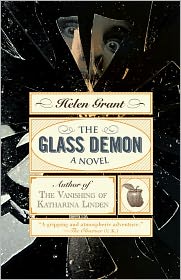 An absorbing coming-of-age mystery with fairy tale influences that will draw in adults and younger readers alike.
An absorbing coming-of-age mystery with fairy tale influences that will draw in adults and younger readers alike.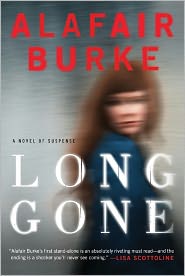 Aspiring New York gallerist Alice expects controversy with her art show, but gets framed for murder in this sleek thriller.
Aspiring New York gallerist Alice expects controversy with her art show, but gets framed for murder in this sleek thriller.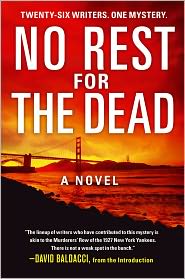 Twenty-six mystery superstars create a collective novel in support of the Leukemia & Lymphoma Society.
Twenty-six mystery superstars create a collective novel in support of the Leukemia & Lymphoma Society. The game is afoot when a manuscript containing murder turns up at the office of editor David Loogan.
The game is afoot when a manuscript containing murder turns up at the office of editor David Loogan. Protagonist Nina Reilly is a rarity—a lovable lawyer, with humor, brains, determination, and warmth.
Protagonist Nina Reilly is a rarity—a lovable lawyer, with humor, brains, determination, and warmth. When I read a Lee Child novel, I have a distinct picture in my mind about what Jack Reacher looks like.
When I read a Lee Child novel, I have a distinct picture in my mind about what Jack Reacher looks like.  Harris’ paranormal mysteries offer an irresistible blend of humor, romance, fantasy, and Southern charm.
Harris’ paranormal mysteries offer an irresistible blend of humor, romance, fantasy, and Southern charm. In creating her series, Harris used the basics of the vampire legend and then created her own mythology and lore. Harris’ vampires are not Bram Stoker or Anne Rice types, nor do they bear a strong resemblance to the ones that plagued Buffy the Vampire Slayer. In Sookie’s world, vampires co-exist with humans after being “outed” years before with the invention of Japanese-manufactured artificial blood.
In creating her series, Harris used the basics of the vampire legend and then created her own mythology and lore. Harris’ vampires are not Bram Stoker or Anne Rice types, nor do they bear a strong resemblance to the ones that plagued Buffy the Vampire Slayer. In Sookie’s world, vampires co-exist with humans after being “outed” years before with the invention of Japanese-manufactured artificial blood. “It was news to me that some people actually thought of themselves as vampires. And it was astonishing to me that there are clubs where people can practice deviant sex. I was surprised to learn that Wicca is a recognized religion in the armed forces and people who practice it can get Wicca holidays off. I must lead a very sheltered life,” she said, with a laugh.
“It was news to me that some people actually thought of themselves as vampires. And it was astonishing to me that there are clubs where people can practice deviant sex. I was surprised to learn that Wicca is a recognized religion in the armed forces and people who practice it can get Wicca holidays off. I must lead a very sheltered life,” she said, with a laugh. Harris has also written vividly of sexual assault and its consequences. Lily Bard is a rape survivor. Sookie’s childhood abuse by her uncle is revealed in the early Southern vampire novels. Harris’ first novel, A Secret Rage (1984) which was a stand-alone, was about a group of women who banded together to find a rapist.
Harris has also written vividly of sexual assault and its consequences. Lily Bard is a rape survivor. Sookie’s childhood abuse by her uncle is revealed in the early Southern vampire novels. Harris’ first novel, A Secret Rage (1984) which was a stand-alone, was about a group of women who banded together to find a rapist. A series of low-level jobs followed college. When she married, more than 29 years ago, she says her husband, a chemical engineer, gave her “a gift”—the chance to stay home and write. Her writing career got off to a good start with two stand-alone novels, Sweet and Deadly and A Secret Rage, both originally published by Houghton Mifflin in the early 1980s. But Harris put her writing career on “sabbatical” to have her children. Today, one son is 23 years old and a computer technician in Fort Worth; another son is 19 and in the Army, based in Alaska. Her daughter is 16 and a junior in high school.
A series of low-level jobs followed college. When she married, more than 29 years ago, she says her husband, a chemical engineer, gave her “a gift”—the chance to stay home and write. Her writing career got off to a good start with two stand-alone novels, Sweet and Deadly and A Secret Rage, both originally published by Houghton Mifflin in the early 1980s. But Harris put her writing career on “sabbatical” to have her children. Today, one son is 23 years old and a computer technician in Fort Worth; another son is 19 and in the Army, based in Alaska. Her daughter is 16 and a junior in high school.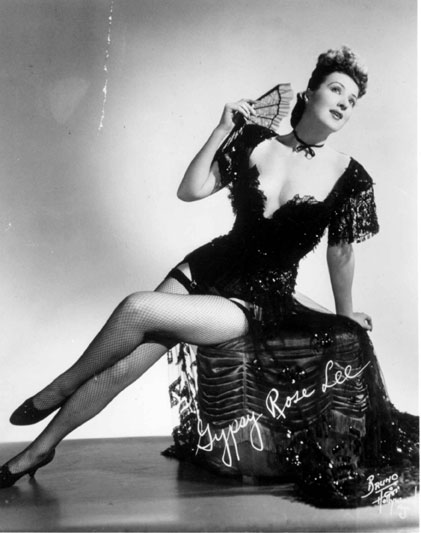 Sometimes the real mystery of a book is its true author
Sometimes the real mystery of a book is its true author But the most intriguing topic in the book is ghostwriting. Bain’s first major success, Coffee, Tea, or Me? (1967), presented the comical amatory adventures of two stewardesses who appeared in public as the authors, Trudy Baker and Rachel Jones. Three sequels followed, plus similar faux first-person accounts of nurses, office temps, teachers, and actresses, always with attractive young women recruited to front the books for publicity purposes. Bain also wrote the autobiography of actress Veronica Lake, crime fiction signed by actor David Toma and ex-cops Nick Vasile and Mike Lundy, and the Murder, She Wrote novels in ostensible collaboration with “Jessica Fletcher,” the fictional character played on television by Angela Lansbury.
But the most intriguing topic in the book is ghostwriting. Bain’s first major success, Coffee, Tea, or Me? (1967), presented the comical amatory adventures of two stewardesses who appeared in public as the authors, Trudy Baker and Rachel Jones. Three sequels followed, plus similar faux first-person accounts of nurses, office temps, teachers, and actresses, always with attractive young women recruited to front the books for publicity purposes. Bain also wrote the autobiography of actress Veronica Lake, crime fiction signed by actor David Toma and ex-cops Nick Vasile and Mike Lundy, and the Murder, She Wrote novels in ostensible collaboration with “Jessica Fletcher,” the fictional character played on television by Angela Lansbury.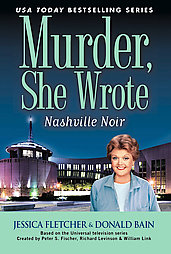 Margaret Truman, the longest running and most commercially successful of the presidential offspring fronting mysteries, offers no hint in any of her books, beginning with Murder in the White House (1980), that she has a ghostwriter, a collaborator, or even a literary mentor. Her “Capital Crimes” novels, which usually use as background Washington, DC. landmarks (the Kennedy Center, the National Cathedral, the Pentagon, the National Gallery, the Library of Congress, etc.), provide plenty of historical tidbits and tourist information. They are far from distinguished detective fiction, but they do rank as above-average celebrity mysteries.
Margaret Truman, the longest running and most commercially successful of the presidential offspring fronting mysteries, offers no hint in any of her books, beginning with Murder in the White House (1980), that she has a ghostwriter, a collaborator, or even a literary mentor. Her “Capital Crimes” novels, which usually use as background Washington, DC. landmarks (the Kennedy Center, the National Cathedral, the Pentagon, the National Gallery, the Library of Congress, etc.), provide plenty of historical tidbits and tourist information. They are far from distinguished detective fiction, but they do rank as above-average celebrity mysteries.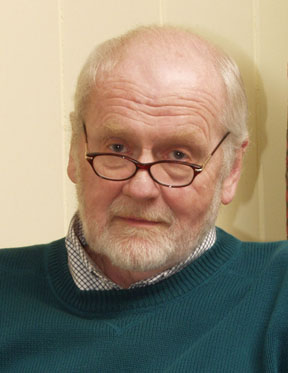 But what does Bain’s autobiography have to say? A note at the end of Every Midget Has an Uncle Sam Costume claims that “contractual obligations prohibit Donald Bain from publicly taking credit for an additional twenty novels.” Elsewhere in the book, he partially contradicts this, writing that “some of my best work appears in an eighteen-book series ghostwritten over the past twenty years for a well-known person. It would be professionally inappropriate for me to take public credit for this series, although I’m not under contractual obligation to conceal my involvement.” (Murder at Ford’s Theatre brings the total of Truman’s novels to nineteen.) Obligatory or not, Bain’s denial fulfills his duty as an honorable ghostwriter. In the same chapter, he excoriates, for ghostwriting unprofessionalism, Lucianne Goldberg, who publicly claimed credit for the novel Washington Wives (1987) out of anger over putative author Maureen Dean’s interviews.
But what does Bain’s autobiography have to say? A note at the end of Every Midget Has an Uncle Sam Costume claims that “contractual obligations prohibit Donald Bain from publicly taking credit for an additional twenty novels.” Elsewhere in the book, he partially contradicts this, writing that “some of my best work appears in an eighteen-book series ghostwritten over the past twenty years for a well-known person. It would be professionally inappropriate for me to take public credit for this series, although I’m not under contractual obligation to conceal my involvement.” (Murder at Ford’s Theatre brings the total of Truman’s novels to nineteen.) Obligatory or not, Bain’s denial fulfills his duty as an honorable ghostwriter. In the same chapter, he excoriates, for ghostwriting unprofessionalism, Lucianne Goldberg, who publicly claimed credit for the novel Washington Wives (1987) out of anger over putative author Maureen Dean’s interviews.
 Often times mystery writers' lives are as intriguing as those characters they write about.
Often times mystery writers' lives are as intriguing as those characters they write about. 
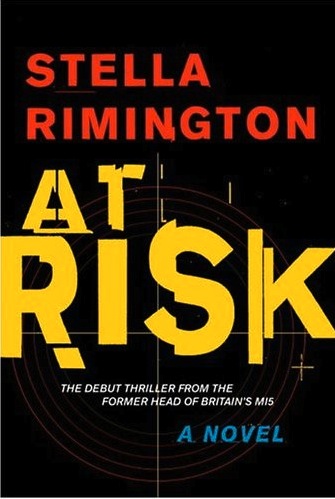
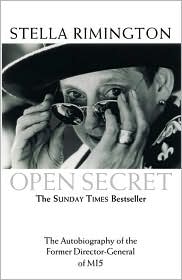
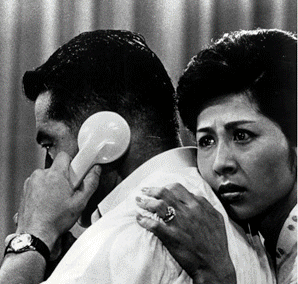 From Japan to Mexico, here are five thrilling foreign films that prove that subtitles are worth it.
From Japan to Mexico, here are five thrilling foreign films that prove that subtitles are worth it.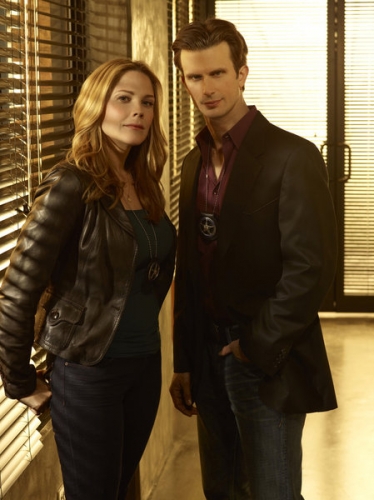
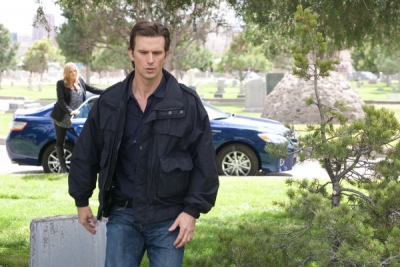 This fourth season has been one of the best for In Plain Sight, one of the top 10 most watched series on basic cable with 4.5 million total viewers.
This fourth season has been one of the best for In Plain Sight, one of the top 10 most watched series on basic cable with 4.5 million total viewers.  Mary Shannon’s pregnancy, prompted by McCormack’s real-life pregnancy, has added a new urgency to this season. Mary Shannon finds herself looking at families differently. Should she give up the child for adoption – a decision she seems firm about – or keep the child? Mary has always been ambivalent about relationships, but this would be a relationship she could not take for granted, or easily walk away from. (Mary McCormack’s baby is due Sept. 16; she said she does not know the baby’s gender.)
Mary Shannon’s pregnancy, prompted by McCormack’s real-life pregnancy, has added a new urgency to this season. Mary Shannon finds herself looking at families differently. Should she give up the child for adoption – a decision she seems firm about – or keep the child? Mary has always been ambivalent about relationships, but this would be a relationship she could not take for granted, or easily walk away from. (Mary McCormack’s baby is due Sept. 16; she said she does not know the baby’s gender.) McCormack: Mary will probably use birth control from now on. She’s learned about that in a real way. She’s learned AA seems to work, her mother’s still sober, which is a miracle. She’s learned that Marshall’s an even better friend that she thought. One of the things that’s been fun for me this season is that her family has not been the mess ups that they’ve been traditionally. She’s had to figure out who she was when she wasn’t looking after them.
McCormack: Mary will probably use birth control from now on. She’s learned about that in a real way. She’s learned AA seems to work, her mother’s still sober, which is a miracle. She’s learned that Marshall’s an even better friend that she thought. One of the things that’s been fun for me this season is that her family has not been the mess ups that they’ve been traditionally. She’s had to figure out who she was when she wasn’t looking after them. Question: Mary, how difficult is it for you to play somebody who’s so totally opposite from you?
Question: Mary, how difficult is it for you to play somebody who’s so totally opposite from you? Last year, Paul Levine celebrated the 20th anniversary of his first novel,
Last year, Paul Levine celebrated the 20th anniversary of his first novel, 
